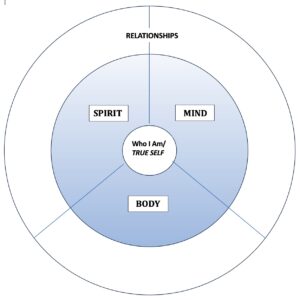Last week, I encouraged you to take on a weekly practice of restoring and loving yourself through yoga. To support you in your experience, I commit to designing a 10-week practice series utilizing the Big 6 Poses in their many variations. Each practice will be guided by the wisdom teachings in the Yamas and Niyamas.
The Yamas are the fundamental renunciation of a life based on fear.
They are the change.
The niyamas are the fundamental practices that sustain a life based on love.
They sustain the change.
Rolf Gates & Katrina Kenison
The Yamas are the first limb on the 8-limb path of yoga. They are ethical practices helping us to grow our personal integrity. The five yamas encourage us to look at the attitude we hold toward our external experiences with people and things. Thus, they focus us on how we conduct ourselves in everyday life in relation to others. They remind us of our responsibilities as social beings. These five ethical principles are:
1) Ahimsa – loving-kindness, non-violence,
2) Satya – truthfulness,
3) Asteya – abundance, non-stealing,
4) Brahmacharya – wise energy use, respectful sexuality, and
5) Aparigraha – self-reliance, non-attachment.
Every moment we are in the presence of others, on or off the mat, is an opportunity to practice the yamas. Think “right words, right thoughts, right deeds.”
The first Yama, Ahimsa, was last week’s practice of gifting ourselves with self-love. When living in fear we are more likely to cause harm to ourselves or others. Thoughtful consideration of ourselves and all living beings removes fear. Freedom from fear liberates loving kindness.
From a practical, everyday experience, many of us were conditioned to be over-achievers believing that striving toward excellence is what brought success to us. As one of those who lived the striver-driver persona, I can attest it takes a great toll on one’s being often resulting in anxiety and depression including a host of other mental and physical diseases. If you recognize the striver-driver identity as part of your own experience, ask yourself “Is this persona motivated by love or fear?” Sit with your answer for as long as you need in order to understand its teaching.
The truth that arises from within unveils our old fears and insecurities. Listening to our truth is practicing the second Yama, Satya. Although our global vision may be for peace and loving-kindness, our global behaviour of torture and war belies this desire. Sadly, violence and hiding the truth confront us on almost a daily basis. The underlying truth of such choices is nicely captured in the quote below.
There is no escape—we pay for the violence of our ancestors.
Brian Herbert, Kevin J. Anderson, Hunters of Dune
One of the obvious ‘payments’ for the violence of war is the trauma absorbed by war veterans—WWI, WWII, Vietnam war, Afghanistan war, etc. Our family members and friends who were participants in those events are deeply wounded with many finding themselves drugged and homeless. And this is only one of the ways we pay for violence; generation by generation. When did we delude ourselves that choosing violence and dishonesty over love and truthfulness could ever bring us happiness?
Considering our words before we speak them enables us to then express from a place of pure intention. In this way, we halt our ego in its tracks and practice truth in our thoughts, words and deeds. As you practice the Big 6 sequence below, ask yourself the following question: What truth is this pose revealing to me about myself?
YOGA ACTIONS:
1. INHALE up the inner faces of the tailbone and sacrum. Let your inhale pass through the sacral-lumbar joint.
NOTE: The inhale up the front of the tailbone scoops the lower abdominals into the body initiating the Mula Bandha (energy lift).
The inhale up the front of the sacrum scoops the mid & upper abdominals initiating the Uddiyana Bandha (energy lift).
2. EXHALE down the back faces of the sacrum and tailbone.
NOTE: The top of the tailbone draws down & away from the bottom of the sacrum.
The bottom of the lumbar lifts up & away from the top of the sacrum.
3. Once you have settled into the pose, ask yourself “What truth is this pose revealing to me about myself?”
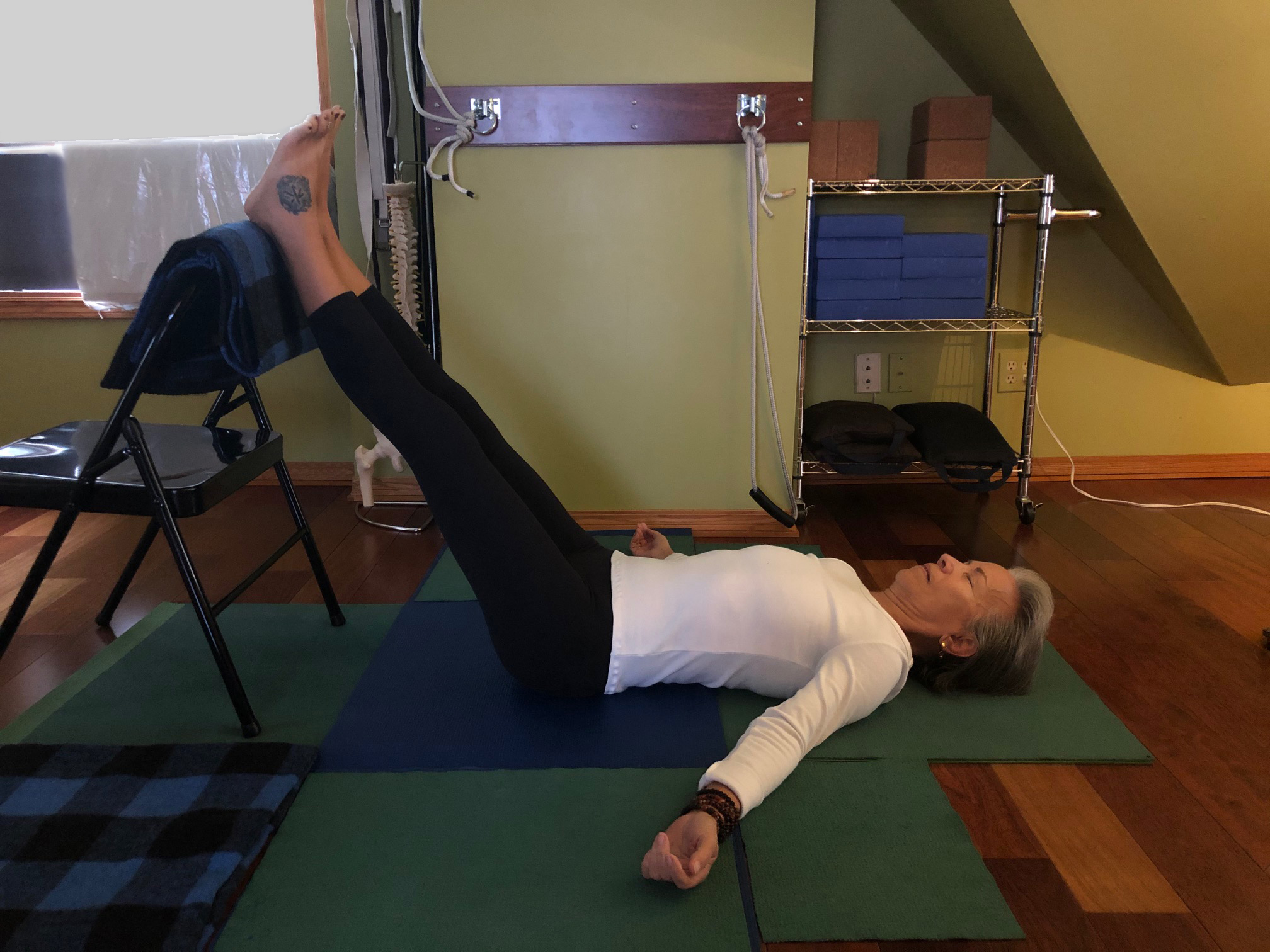
KAIUT VIPARITA KARANI (Legs Up The Wall) 10 minutes
– blanket over chair back with heels risting on blanket
2. 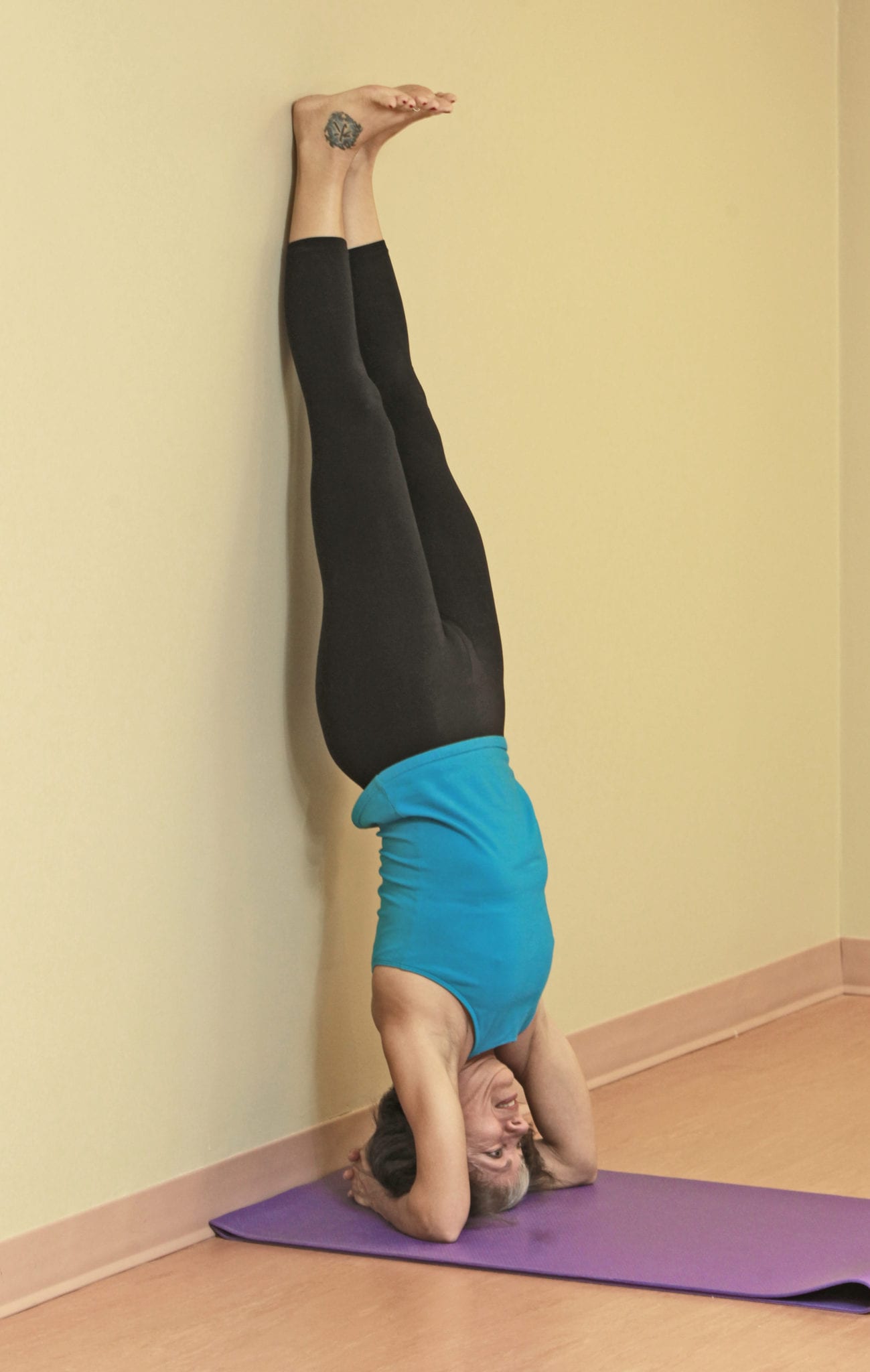
SALAMBA SIRSASANA (Headless Headstand) 1-2 m
– crown of head is off the floor
3. 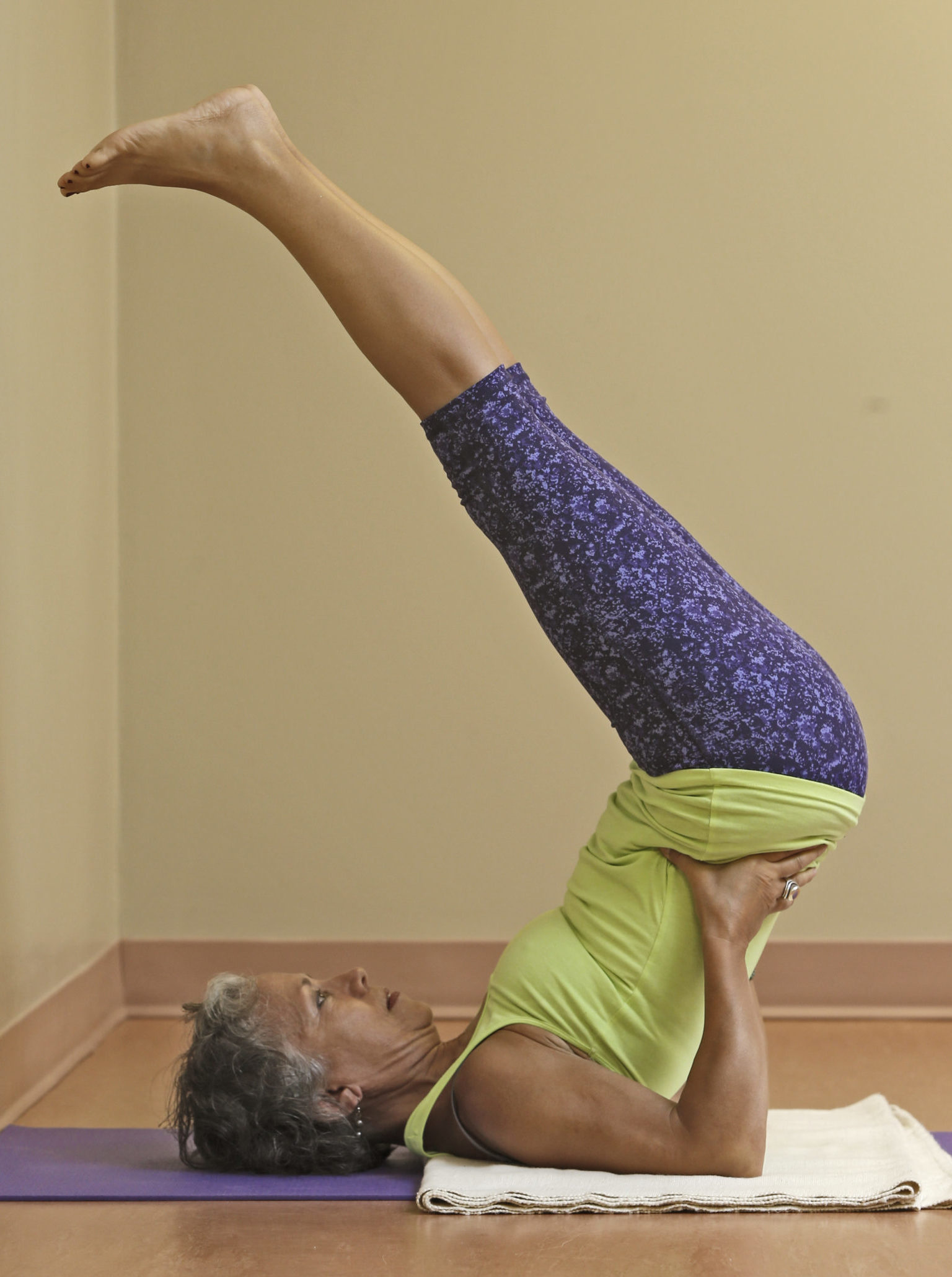
ARDHA SARVANGASANA (Half Shoulderstand) 2 m
– pelvis rests into hands
4. 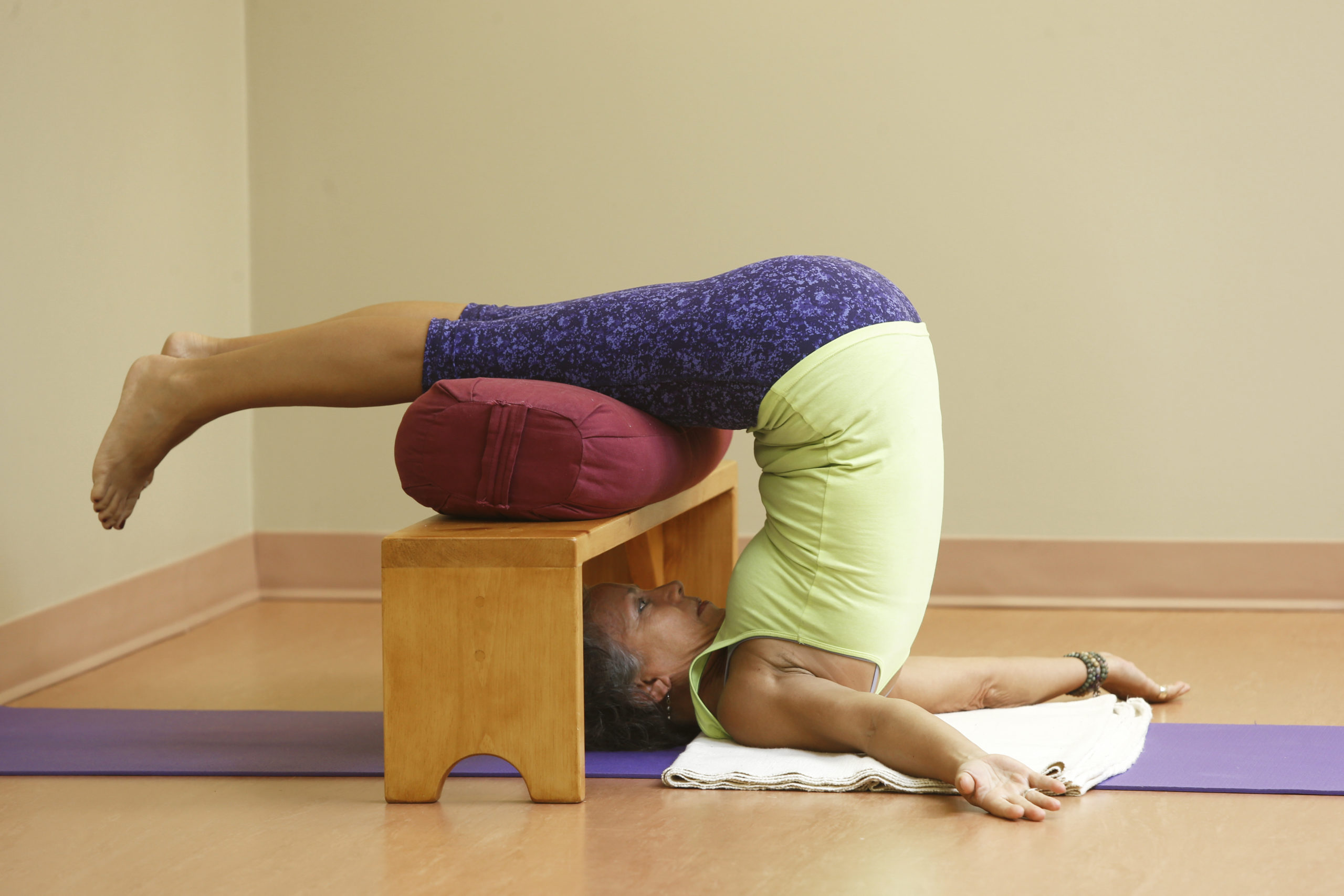
SALAMBA HALASANA (Supported Plow Pose) 3 m
– if you do not have these props, move closer to the wall so your feet make contact
– keep ankles and hips in a parallel line
5. 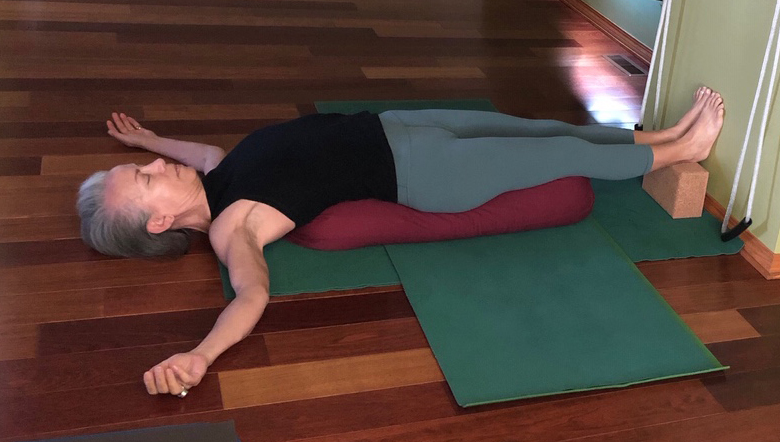
SETU BANDHA SARVANGASANA (Supported Bridge Pose) 3 m
– heels on a block; bolster’s top edge into bottom of shoulder blades
– shoulders release into floor
6. 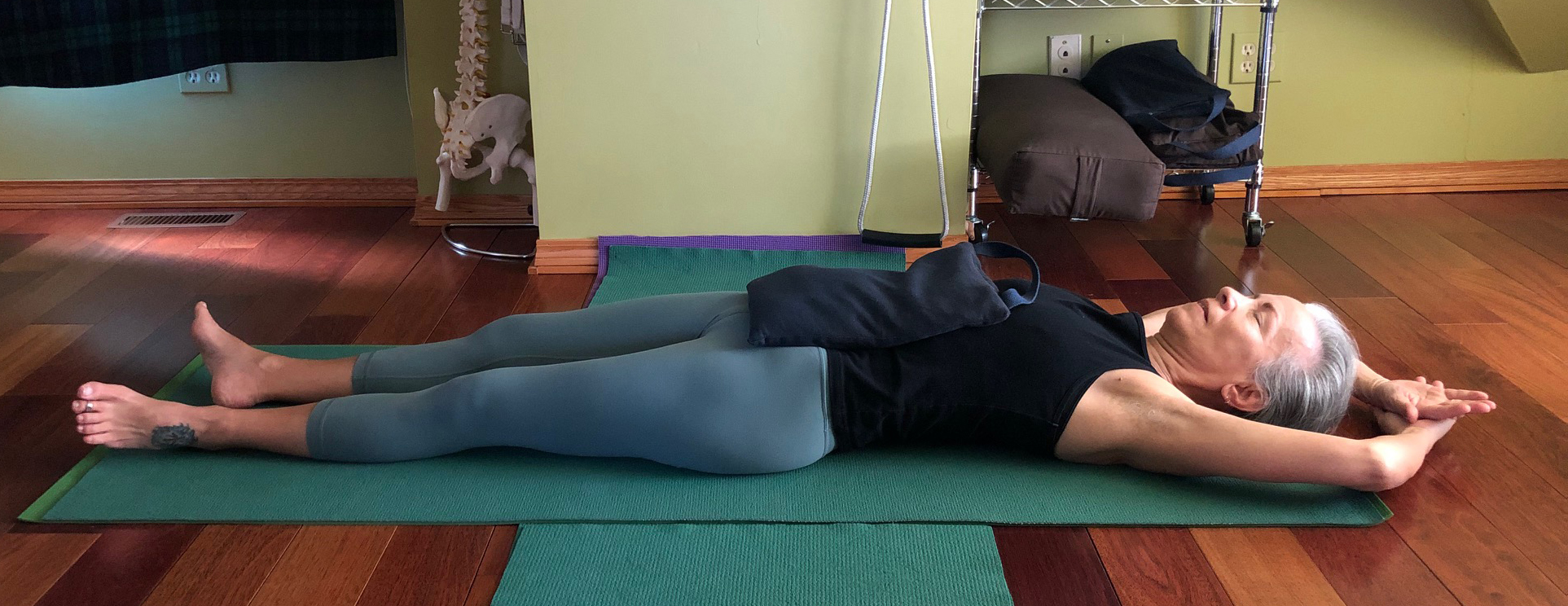
SAVASANA (Corpse Pose) 5-10 m
– sandbag or weight along front of spine; arms overhead
– rest one hand in the other
– Repeat the following Meditation chant:
May we exist like the lotus
at home in the muddy water.
Thus, we bow to life as it is.
May your truth enable you to accept each moment as it is. Namaste.


